|
When you ask someone which of Pope Francis’ writings they think of first, you’re likely to hear Evangelii Gaudium, maybe Christus Vivit if you’re talking to someone in youth or young adult ministry, Laudato Si if the person is particularly environmentally conscious, or Amoris Laetitia for those who work in family ministry. The two that, by my estimation, might be least likely to be mentioned are Lumen Fidei (which was Pope Francis’ first papal document and was written by both he and Pope Emeritus Benedict XVI) and his Apostolic Exhortation Gaudete et Exsultate. This is a real tragedy because Gaudete et Exsultate might be one of the most important writings in Pope Francis’ pontificate, though I know that since I’ve said this, he’ll write something even better. Recently, the Church has celebrated the Solemnity of All Saints and the Commemoration of All Souls. On All Souls Day, the Church prays for all of the faithful departed, for the souls in Purgatory who will, one day, be welcomed into the Eternal Banquet. The Solemnity of All Saints celebrates all of the Saints in Heaven, both those great saints who are venerated in churches across the world, and those “saints next door”. In Gaudete et Exsultate, Pope Francis writes, “very often it is a holiness found in our next-door neighbours, those who, living in our midst, reflect God’s presence… Let us be spurred on by the signs of holiness that the Lord shows us through the humblest members of that people which ‘shares also in Christ’s prophetic office, spreading abroad a living witness to him, especially by means of a life of faith and charity’.” He reminds us that holiness is not just for those who are called to do great things, but by all of those who live a life of faith and who are followers of Jesus. We often see prominent Catholics telling us to “do great things”. They get this from Pope St. John Paul II who said to young people at World Youth Day in 2000, “It is Jesus who stirs in you the desire to do something great with your lives, the will to follow an ideal, the refusal to allow yourselves to be grounded down by mediocrity, the courage to commit yourselves humbly and patiently to improving yourselves and society, making the world more human and more fraternal.” And the great Saint has a point: when the world leads us to such mediocrity, a mediocrity which leads us to individualism, relativism, and complacency, the Lord Jesus leads us to greatness. What I think can be lost in translation, at times, is that this greatness is not worldly greatness. This greatness which Pope St. John Paul II spoke of is the greatness that a life of faithful missionary discipleship can bring. Greatness that is marked by hope, by a rich and abounding charity towards our neighbor, by a gentleness that comes from resting in eternal truth, and by a trajectory that always moves, as Bl. Pier Giorgio Frassati would say, “verso l’alto”, or “to the heights.” In Gaudete et Exsultate, Pope Francis leads the People of God on this journey to greatness which, when properly viewed, is indeed the journey to holiness. He reminds us that the Scriptures give us regular calls to holiness, a theology which was explored and articulated more deeply and precisely at the Second Vatican Council. He reminds us that, “This holiness to which the Lord calls you will grow through small gestures,” in a way echoing the words of St. Teresa of Calcutta who said, “not all of us can do great things, but we can do small things with great love.” Maybe this is the greatness which Pope St. John Paul II was speaking about to those young people over two decades ago. Not greatness which is pursued for any individual person’s gain, but great love. Love which seeks to echo the love of Jesus Christ on the Cross, love that wills the good of the other. This love is articulated in the Beatitudes, which Pope Francis calls “the Christian’s identity card.” Pope Francis gives us a deep and insightful document in Gaudete et Exsultate. He gives us cause to reflect on our lives and on the holiness which the Lord calls us to. He reminds us that we can’t do the Christian life alone and that our living of that life will make us counter cultural. We should find great cause for hope in Gaudete et Exsultate. In the words of Pope Francis, may we, “ask the Holy Spirit to pour out upon us a fervent longing to be saints for God’s greater glory, and let us encourage one another in this effort. In this way, we will share a happiness that the world will not be able to take from us.” For more resources on Pope Francis, click here for our Pope Francis Portal. For more resources on Gaudete et Exsultate, click here for our resource page.
0 Comments
This November, many of the saints we celebrate have left a lasting impact in the Church. Three of the saints this month were known as “the Great”, all for unique reasons. We also will get to celebrate four lay women saints whose lives can still inspire us today. In addition, two days before Thanksgiving this year, on November 23rd, we will celebrate three feasts of men who all lived very different lives, but all devoted their faith to the faith. “The Greats” The first feast of “the Greats” in November is St. Leo the Great on November 10th. St. Leo the Great was a pope in the 5th century who is known as “the great” for saving Rome from invasion and thus saving the Church community in Rome. He is also known for his writings, which led to him being named a Doctor of the Church. On November 15th, we will celebrate the feast of St. Albert the Great: a 13th century Dominican known for both writing on the works of Aristotle and being the teacher to St. Thomas Aquinas. He is known as “the great” today for many of his intellectual contributions to the Church, which has also led to him being known as the patron saint of scientists and philosophers. The day after St. Albert the Great, we celebrate St. Gertrude the Great. She was as a mystic and was given the title of “the great” because of her deep theological and spiritual insights. While all these “greats” lived quite different lives, they became recognized as greats for their deep commitment to their faith throughout all aspects of their life. Lay Women On November 16th, we will celebrate St. Margaret of Scotland. When she was Queen of Scotland in the 11th century, she was known for her piety and using her position as queen for charitable works for all of the people of Scotland. She’s a great example to us of staying focused on our faith and charitable actions even through stressful times. I find it fitting that we will celebrate St. Elizabeth of Hungary the day after St. Margaret of Scotland. Even though St. Elizabeth of Hungary, a princess in the 13th century, only lived until 24, she used her wealth to establish a hospital and care for sick patients. Even though she didn’t live a long time, she is known as the patron saint of hospitals and nurses today. On November 22nd, we will celebrate St. Cecilia. St. Cecilia was martyred in the early Church and because of her musical passion, she is known as the patron saint of musicians today. Then, on November 25th we will celebrate St. Catherine of Alexandria, a saint from the early Church who converted to Christianity and then used the rest of her life to challenge pagan philosophers and engage with the intellectual components of the faith. All four of these lay women have greatly impacted the Church and continue to inspire us today. November 23rd On November 23rd, we will celebrate three feasts, a rare day where we have three separate feasts to celebrate. The first one chronologically is Pope St. Clement I, a pope at the end of the first century. Even after being exiled, he continued to work miracles, to the point where it cost him his life through martyrdom. St. Columban was a missionary is the 6th and 7th centuries who is known as one of the proto-missionaries in Europe. St. Columban is primarily known for his missionary work in Ireland where he helped establish the monastic tradition. Bl. Miguel Agustin Pro was a Jesuit priest in Mexico in the 1800s when public worship was illegal. Despite the fact the public worship was illegal, he continued to lead his people in the sacraments. He was eventually martyred; he is known for stretching out his arms as he was being killed and saying, “Viva Cristo Rey!” As we continue this November, let us pray for the intercession of these powerhouse saints, praying for their intercession to boldly life out our faith throughout our lives. To learn more about the saints, visit our Catholic Feast Days Website by clicking here. To view a calendar of the feast days in November, and each month, click here.
This October, as summer turns to fall and the days start getting shorter, we sometimes find ourselves with opportunities to reflect on some of life’s bigger questions. I often find myself this season asking deep questions on a nice walk outside while admiring the beauty of nature. A lot of times, these big life questions usually involve prayer, discernment, and looking to role models. When I sat down to look at the saints whom we celebrate this October, I realized that many of them had to face similarly tough life questions. The popes, young people in the Church, and martyrs we celebrate this October can help us grow in our own faith journey. Pope Saints Next week, we will celebrate two saints who were popes, albeit at vastly different times. On October 14th, we will celebrate the feast of St. Callistus I (also know as Callixtus I). For many, he is probably one of the lesser-known pope saints. He was the 16th pope and had to deal with great division in the Church. He was able to navigate the Church through many doctrinal controversies through these turbulent times and was martyred around the year 222. Similarly, St. John XXIII navigated through many challenging questions in the Church when he opened the Second Vatican Council in 1962. It was through much prayer and discernment that both popes were able to guide the Church out of murky waters. Later this month, we will celebrate Pope St. John Paul II. One of my favorite John Paul II quotes epitomizes the courage he calls all of us to in living out our faith: “Do not be afraid. Do not be satisfied with mediocrity. Put out into the deep and let down your nets for a catch.” Saints who had an impact in their youth Already this month, we have celebrated two saints who had a major impact on the Church while in their youth: St. Thérèse of Lisieux and St. Francis of Assisi. St. Thérèse, who died at 24, was known for her life of fervent prayer. She was a cloistered Carmelite nun whose prayer was not focused on herself, but on the whole world. She is known as one of the patron saints of missionaries even though she lived as a cloistered nun. St. Francis of Assisi also had a huge impact on the Church while still young. St. Francis was in his 20s when he heard God’s call in the chapel at San Damiano, but it took him time and further prayer to realize God’s true calling for him. St. Francis’ perseverance in the faith and continual discernment of God’s call, even in times of confusion, inspire me. Bl. Carlo Acutis, beatified just last year, also positively impacted the Church in his youth. Bl. Carlo was an amateur computer programmer who died in 2006 at the age of 15. He used his passion for computers to create a website documenting Eucharistic miracles across the world. Martyrs from all ages Throughout the rest of the month, we will celebrate the feast days of martyrs from all time periods in the Church. This includes the memorial of two Apostles: Sts. Simon and Jude. While not much is known about the lives of Sts. Simon and Jude, it is known that they both were killed for their faith. Also martyred in the time of the early Church was St. Ignatius of Antioch. He is known for his incredible writings on Christology. St. Denis was also a martyr in the time of the early Church. Many portrayals of St. Denis will show him holding his head in his arms because after his was martyred, legend has it that he held his head and shared Christ with those who killed him. On October 19th we will celebrate Sts. John de Brebuf and Isaac Jogues, the patron saints of North America. They were killed in the 17th century while ministering to the Iroquois. Even though they had previously been captured and knew that they could be killed, they placed all of their trust in God and continued their missionary work. Throughout the rest of this October, let us pray for the intercession of these saints in helping us be courageous in prayer and discerning God’s continuing will for us. To learn more about the saints, visit our Catholic Feast Days Website by clicking here. To view a calendar of the feast days in October, and each month, click here.
“Stay with me, Lord, for I desire to love You very much, and always be in Your company. Stay with me, Lord, if You wish me to be faithful to You. Stay with me, Lord, for as poor as my soul is, I want it to be a place of consolation for You, a nest of love.” These are words taken from the prayer of St. Padre Pio of Pietrelcina after Holy Communion. Padre Pio is known for many supernatural things, including the ability to fly, the ability to bilocate, and having the stigmata of Christ. Those who have taken the time to look into the holy life of Padre Pio will acknowledge his piety, his love for the Holy Eucharist and the Blessed Mother, his great ability to heal people, and his devotion to the Sacrament of Confession. Born in 1887 in Pietrelcina, Italy, Padre Pio entered the novitiate with the Capuchin Franciscans in 1903. Only five years after his ordination, Padre Pio was called into military service with the Italian Army Medical Corps in 1915. Shortly after, the wounds of Christ, the Stigmata, appeared on Padre Pio’s body. The presence of these wounds drew great intrigue and criticism. In the attempts to discover an answer, “Countless experts and doctors looked at his wounds with no clear explanation.” The stigmata, as well as Padre Pio’s great holiness and renown as a confessor, drew pilgrims from all over to visit with him. It is said that Padre Pio was such a prolific confessor that the waiting time for confession with him could stretch for over a week, and he would spend over fifteen hours in the confessional on any given day. Padre Pio is not a holy man who should inspire our lives of faith because he could levitate, bilocate, or see people’s guardian angels. No, Padre Pio is venerated and beloved because of how much he loved the Lord. The Lord granted his servant these graces and gave him these charisms to witness more fully to Christ. It is easy for us to get discouraged because our lives of faith do not include these grand displays of God’s favor. We worry because the saints have such remarkable stories and attributes that we read about while our own lives are so ordinary. But if Padre Pio were still on this earth with us, it is most likely that he would draw your attention away from those miraculous actions and towards our Blessed Mother, the mercy of God in the confessional, and our Lord Jesus Christ in the Eucharist. When my Dad had a serious accident in December 2018, I immediately prayed for St. Padre Pio’s intercession for a miraculous healing. One of my best friends had told me how great Padre Pio’s healing power was, I’d acquired a relic of his, and my devotion was growing. Almost every day, I would pray Padre Pio’s prayer after receiving Holy Communion in the chapel of the hospital or in my Dad’s room. I was drawn to the beauty of the prayer, how it reads like a great ballad, building in intensity and truth. At the same time, the prayer is so simple at its heart: Stay with me, Jesus. Padre Pio knew of his own weakness, the weakness of the human condition, and simply asked our Lord to remain close to him. May this simple yet beautiful prayer be ours today. May, in every situation we find ourselves in, we turn to Jesus as Padre Pio did and with our whole heart implore him, “Stay with me, Lord.” Click here to learn more about St. Padre Pio.
The past two months we have gotten to celebrate the feast days of many incredibly saints who can be role models for us throughout all the ups and downs of life. This September is no different. As we transition out of summer and enter into new routines in the midst of the continuing pandemic, we can turn to many of the saints this month who are known for their healing and ability to help others grow in their faith. Saints Known for Physical Healing Earlier this month on September 1st, we celebrated the feast of St. Giles. I had never heard of St. Giles until I read a blog post, from the early days of the coronavirus pandemic, about the 14 Holy Helpers. But the more I got to learn about St. Giles, the more his life inspired my own personal faith journey. Even though an injury crippled one of his legs, St. Giles was known for his miracle-working abilities for those who came to him. His mission as a miracle-worker was always centered on others, not himself. A similar selflessness was seen by two martyrs in the early Church, Sts. Cosmas and Damian, whose feast we will celebrate on September 26th. They both were doctors and did not accept payment for any of their services, recognizing the humanity in each person. They utilized their God-given skills to help anyone in need, which led them to become recognized as the patron saints of physicians. All three of these saints remind me that while this world is not our final destination, taking care of our earthly bodies remains very important. In whatever way we may need physical healing, God is eager to hear us and to help us physically as we continue to live out His mission here on Earth. Saints Known for Spiritual Healing Next week, we will celebrate the feast of Our Lady of Sorrows. The Marian feast of Our Lady of Sorrows is special because it is about the spiritual turmoil Mary experienced during her life. This is why Our Lady of Sorrows is typically represented by seven daggers piercing her heart. For me, Our Lady of Sorrows is not just about praying for the intercession of Mary, but also placing our complete trust in the Lord, just like she did throughout the sorrows in her life. This trust was also central to St. Padre Pio’s ministry. He recognized the need for spiritual healing and committed to hearing Confessions, and he understood the significant act of faith it took to go to Confession. Through the intercession of Our Lady of Sorrows and St. Padre Pio, may we take time this month to trust God with spiritual healing in our lives. Role Model Saints for Spiritual Growth This month is bookended by two saints who are role models for integrating spiritual growth into the activities of their daily life: St. Teresa of Calcutta, whose feast was celebrated on September 5th, and St. Vincent de Paul, whose feast will be celebrated on September 27th. The interesting thing about these saints is that they both could have fallen into the categories of physical healing or spiritual healing. But for me, these well-known saints have been role models for integrating caring for other people with spiritual growth. It seems easy to get so focused on our work that we forget the deeper meaning behind it. Mother Teresa and St. Vincent de Paul worked to help those in need, and they saw Christ in everyone and in every task they did. While we may not be feeding the poor of Calcutta every day, we too can try to grow spiritually by seeing Christ in every aspect of our day. As we continue throughout this month of September, let us ask for the saints’ intercession for healing and learn from their lives in order to grow closer to Christ. To learn more about the saints, visit our Catholic Feast Days Website by clicking here. To view a calendar of the feast days in September, and each month, click here.
Sometimes sanctity feels like an impossible goal. I can admire and love the holiness of the saints but, like the achievement of the professional athlete or Nobel prize winner, I know that it is not something readily within my reach. It seems to be a rare gift or a special privilege, so it is easy to console myself with the seemingly humble admission of how far I fall short of such a lofty ideal. Being a saint is a gift and a privilege, so we would be right to attribute such holiness to God’s grace! But drawing closer to the saints themselves reveals something more about holiness and the quiet daily struggle of love. Saint John Eudes, whose Memorial we celebrate today, is remembered chiefly for his devotion to the hearts of Jesus and Mary. But this devotion wasn’t an abstract concept or merely a personal predilection. It was a concrete way of expressing God’s transformation and transfiguration of humanity through the event of the Incarnation. And in the image of the heart, the fullness of human sanctity is revealed. Saint John Eudes, like so many other saints, wrote many wonderful spiritual works. What stands out in his thought, however, is the intertwining of a meditation upon the holiness of Christ’s life and the necessary holiness of life to which all Christians are called. If I feel intimidated by the holiness of the saints, then I feel infinitely more intimidated by the challenge of truly imitating Jesus’ life! And yet that is exactly what Saint John Eudes encourages us to do. Union with Christ through faith and the sacraments is not a nice sentiment or empty metaphor, but rather a concrete connection to the reality of his Incarnate life. Taking inspiration from Saint Paul’s affirmation that “in my flesh I am filling up what is lacking in the afflictions of Christ on behalf of his body, which is the Church,” (Col 1:24), Eudes argues that every Christian is joined to Christ’s life in a similar way through grace: “Thus, when a Christian prays, he continues and accomplishes the prayers of Jesus Christ. When he works, he continues and accomplishes Christ’s laborious life. When his relations with his neighbor are inspired by charity, he continues and accomplishes Christ’s public life. When he takes his meals or his rest in a Christian fashion, he continues and accomplishes the subjection to these necessities that Christ willed to have in Himself.” (The Life and the Kingdom of Jesus in Christian Souls, pg. 6) Like Saint Paul, Saint John doesn’t mean to imply any deficiency in Christ’s earthly life or the efficacy of his Passion, Death, and Resurrection. Rather, he reminds us that Jesus’ true humanity sanctifies ours in a radical and comprehensive way. As the Catechism of the Catholic Church puts it, “Christ enables us to live in him all that he himself lived, and he lives it in us” (§521). Does this make holiness seem any more achievable? Saint John Eudes, while still recognizing the difficulty, saw it as a means of drawing the ordinary in our lives (prayer, work, meals) into the realm of Christ’s true human life of ordinary holiness. In his further meditations and exercises, Eudes encourages all Christians to sanctify every action of each day, each week, each month, and each year. Every moment of our lives is changed by Christ’s life, because Christ is truly human and truly divine, the “Word made flesh” in all the specificity of what it means to “dwell among us” (John 1:14). Every moment of our lives is potentially transfigured because God has lived our life even in its quiet struggles and hidden joys. This is sometimes hard for me to remember, when life seems too complicated, too busy, or too ordinary. But drawing close to the saints reminds me of their humanity and, through them, the humanity of our Lord Jesus Christ. As Saint John Eudes teaches us, this shouldn’t be a way of excusing our sinfulness and limitations as merely human. Instead, it should be a way of seeing even the least things in ourselves as a continuation of Christ’s transfiguring love.
“It is well done. Turn me over!”
No, that’s not a joke that starts “what did one steak say to the other steak?” Those are some of the final words attributed to St. Lawrence, deacon and martyr, whose feast we celebrate today. St. Lawrence was a Deacon during the pontificate of Pope St. Sixtus II and, along with some other clerical companions, was martyred just days after Pope Sixtus II himself was put to death. St. Lawrence has two great stories attributed to him by tradition. Lawrence, being a deacon, was entrusted with the care of the poor and the material goods of the Church. Knowing that he would likely face a fate similar to Pope Sixtus II, Lawrence began to give away all of the money that he had to the poor. He even went so far as to sell sacred vessels to give the money to the poor. When the prefect of Rome heard of what Lawrence was doing, he ordered him to bring the money and goods that he had to him so that the prefect could be rich. Lawrence heeded the request of the prefect, asking for some time to gather the riches to give over. When he returned, he brought with him the sick, orphaned, widowed, and more, presenting them to the prefect. He famously said to the prefect, “these are the treasure of the Church.” As you can imagine, this action did not endear Lawrence to the prefect and he ordered Lawrence killed—which leads to the second story. As is the story of many early martyrs, the death that Lawrence was to endure was not a simple one. The prefect, angry as he was, had a massive grill prepared upon which Lawrence’s body was placed. Imagine the pain of searing hot metal and the flames beneath it. Instead of struggling to be free or trying to convince the prefect not to kill him, Lawrence famously said after some time, “It is well done. Turn me over!” Other than funny anecdotes, what does the life of St. Lawrence have to teach us? It teaches us two very important lessons. The first lesson is this: the wealth of the Church is not in its gold reliquaries, its beautiful art, or even in the collection basket, but is in the poor, the hungry, the oppressed—the children of God for whom we should care the most. It is easy to get caught up in the societal reaction which looks upon those most in need as those whom we should avoid. St. Lawrence reminds us that these people—the poor, the hungry, the oppressed—are not a body of persons, but are individual people. They are people, not for us to take advantage of or look upon with scorn, but people who are the riches of the Church. St. Lawrence reminds us to always look at the poor, hungry, and oppressed as such and to love them with all of our hearts. The second lesson is to live with joy overflowing. Imagine the pain and suffering which Lawrence endured in his martyrdom, yet he responded with humor. There is no way that would have been possible without a life of joy which can only come from a deep and intimate relationship with Jesus Christ. We will always face hardship, Christ assured us of that, but how do we respond to that hardship? We are not called to be exactly like Lawrence, to respond with humor when we have no humor to muster, but to live with joy which can only come from a deep relationship with Christ. St. Lawrence, deacon and martyr, pray for us! To learn more about St. Lawrence, please click here.
Pope Francis eloquently writes in his post-synodal exhortation Christus Vivit, “After this brief look at the word of God, we cannot just say that young people are the future of our world. They are its present.” In the last decade, and especially since Christus Vivit was promulgated in 2019, the Church has sought to help the Church’s youth become protagonists in their own right. This is seen in many parish, diocesan, and archdiocesan initiatives to form young Church leaders. Some examples of this include creating new diocesan offices for youth and young adult ministries and the growth of many high school and collegiate campus ministry offices. Nevertheless, young people crave young role models for the Faith. Pope Francis recognized this and listed many examples, including Mary, St. Francis of Assisi, and St. Joan of Arc. In this blog, I wish to discuss three saints in particular--Bl. Carlo Acutis, St. Jose Sanchez del Rio, and St. Therese of Lisieux—and how their witnesses are a model for young people (especially youth leaders) who wish to dive deeper into a relationship with Christ and his Church. Young people everywhere crave to see an aspect of themselves in the people they look up to, and Bl. Carlo Acutis is a soon-to-be saint who allows young people to see commonalities between themselves and the saints. Carlo was a typical Italian teenager who played soccer and video games. Nevertheless, he also made great strides for God in his work, uploading Eucharistic miracles to a website to spread devotion to the Body and Blood of Christ. He was called “an influencer for God” by his mother in an America Magazine article. Bl. Carlo stands as a soon-to-be saint accessible to the Church’s youth because of his young age and his connectedness to 21st-century culture. Bl. Carlo Acutis models for youth leaders how evangelization must occur within the culture and modern media, not from an ivory tower of formal theology and scholarship. The Gospel must be spread in a way that all generations can appreciate, and Bl. Carlo accomplished that with the creation of his website. Another young person who bore witness to the Faith in the context of his own time was St. José Sánchez del Rio. Saint José was a young man growing up in Mexico during the Cristero Wars. The Cristero Wars were a series of conflicts between the Mexican President Plutarco Calles's secularist government and Cristero fighters (formally known as the National League for the Defense of Religious Liberty). The Calles government imposed the 1917 Mexican Constitution, which contained anticlerical policies and sought state atheism. Catholics across the country opposed this and began resisting through liturgical services and military resistance against the Mexican army. Saint José was a young man during the war and wanted to fight to defend his Faith. His mother, however, refused to let him formally join the Cristero Movement. This made St. José contribute to the movement indirectly and attend Mass whenever possible. Nevertheless, when a Cristero General lost his horse in battle, young José offered his, and this led to his imprisonment by the Mexican army. After being tortured to renounce his Faith, José refused and was martyred. St. José Sánchez del Rio’s witness to the Faith is one of the best examples of what a Catholic is called to do by Christ: witness the Faith within your own culture and times while not renouncing our Lord. Despite his young age, St. José believed in Christ’s love and graces, and that gave him the strength to be countercultural and stand with Jesus instead of with the popular culture and the government that stood against Him. Finally, St. Thérèse of Lisieux remains one of the most commanding forces in the Church’s lexicon for youth witnesses. Becoming a Carmelite at age fifteen, Thérèse began to pray incessantly and pioneered her famous “Little Way” for the spiritual life. St. Thérèse’s “Little Way” seeks to help people encounter Christ in their day-to-day activities and pray to Jesus with childlike dependency. St. Thérèse of Lisieux’s powerful devotion to the Eucharist, prayer, and a joyful attitude allow many to realize that one can be close to Christ no matter what they are doing. St. Thérèse stands as a strong role model for young Catholics since her relationship to Christ reached such profound depths at her young age. Young people crave role models in the Church, and older generations can find powerful witnesses and wisdom from young Catholics as well. The Church has been and must remain dedicated to telling and promoting the stories of young saints to inspire every generation to become protagonists in the Church and saints for Christ’s kingdom. Young people can be inspired by these saints since they can “…offer the Church the beauty of youth by renewing her ability to ‘rejoice with new beginnings, to give unreservedly of herself, to be renewed and to set out for ever greater accomplishments’” (Pope Francis, Christus Vivit).
As we begin this month of August, we trudge into another month of Ordinary Time in the liturgical calendar. That doesn’t mean, however, that we don’t have much to look forward to with feast days this month. August is filled with feast days from saints who lived less than a century ago, all the way to saints from the early Church—from religious to laity, from saints I’ve learned about my whole life, to saints I had never heard of before. Let us take time throughout this month of August to learn about the Christ-filled lives of these powerful saints. Saints who Founded Religious Communities: There are many saints this month who founded religious communities—all of which have had a great impact on the Church. St. Dominic founded the Dominicans, also known as the Order of Preachers, which is a religious order known for their preaching and rich intellectual history. St. Clare of Assisi worked with St. Francis of Assisi and helped found the Poor Clares, a group of contemplative nuns and the second branch of the Franciscans to be founded, just after the Order of Friars Minor. Back in the time of the early church, St. Augustine wrote the Rule of St. Augustine, which became the foundation for the Augustinians. In the 12th century, St. Bernard of Clairvaux helped spread the Cistercian Order, an order of monks and nuns that branched off from the Benedictines and remains strong today. St. Cajetan helped found the Theatines which became a religious order with many bishops and intellectuals in the Church. With the help of St. Francis de Sales, St. Jane Frances de Chantal founded the Visitation Order which was a religious order open to women who had been turned down from other orders for poor health or similar reasons. The French mystic St. John Eudes founded two religious orders in the 1600s, both following St. John Eudes’ special devotion to the Sacred Hearts of Jesus and Mary. More recently, in the 18th century, St. Alphonsus Liguori founded the Redemptorists, a religious community with a special devotion to Our Lady of Perpetual Help. In the 19th century, French priest St. Peter Julian Eymard helped found two religious orders, both with a special devotion to the Blessed Sacrament. At first, I found this list quite overwhelming. These saints founded and/or helped spread their religious orders, something I can’t even fathom, especially in our pandemic-affected world today. But then I recognized the beauty that comes to the Church as a result of this wide range of religious communities. Each community is called to follow their own unique charism, all while growing closer to Christ and bringing Him to others. After sitting with this, I realized that there is beauty in the lives of each of these saints and in how the Church works in many ways, through many charisms, to help lead everyone to a life of holiness. Martyrs in the Month: In a six day stretch next week, we will celebrate three well-known martyrs in the Church. Back in the early Church, St. Lawrence was killed and is famous for his quips as he was being grilled to his death—showing his faith in Christ to the end. Much more recently, St. Teresa Benedicta of the Cross was a Discalced Carmelite nun who was killed at the Auschwitz concentration camp during World War II because of her Jewish heritage. Similarly, St. Maximillian Kolbe was martyred at Auschwitz, giving his life in place of another prisoner, and was thus bestowed the title “martyr of charity”. While we may not face martyrdom like these saints, we can learn from how they trusted Christ and pray for their intercession in our lives. Saints and Their Country: Later this month, we will celebrate the feast days of three saints who are known by their primary locations: St. Stephen of Hungary, St. Louis of France, and St. Rose of Lima. These saints all lived incredible lives, all very authentic to the community in which they lived. As we progress through this month, these saints can serve as role models for us in how we can follow Christ and bring others to Him in whatever region we find ourselves. As we walk through this August, let us look to the lives of the saints to learn to be saints right where God has called us to be through whatever charism He calls us to. To learn more about the saints, visit our Catholic Feast Days Website by clicking here. To view a calendar of the feast days in August, and each month, click here.
Over the past year as I helped develop the Catholic Feast Days website, I was always struck by the number of saints whose feast days were in July. As we enter into this July, I found myself reflecting on the lives of the saints whose feasts are celebrated this month. From apostles to saints in our era and everywhere in between, the lives of the saints celebrated this month have offered great spiritual nourishment to me. Three well-known Saints: This month we get to celebrate three powerhouse saints: St. Benedict, St. Bonaventure, and St. Ignatius of Loyola. Sometimes I find it hard to relate to some of these well-known saints. St. Benedict helped found modern monasticism. St. Bonaventure was one of the greatest theologians of his time. St. Ignatius of Loyola founded the Jesuits. Together they set a pretty high, almost discouraging, standard that feels hard for me to reach. But, as I continue to learn more about their lives, I realize that throughout their ups and downs, they offered themselves to God, no matter how high the mountain or low the valley. Likewise, God is calling us to follow Him. He is calling each of us individually, wherever we are in our lives, to do the same. Four Saints on the Way: Starting later this week, we get to celebrate four ‘Blesseds’ in the Church: Bl. Pier Giorgio Frassati, Bl. Maria Romero Meneses, Bl. Stanley Rother, and Bl. Solanus Casey. Even among these four Blesseds, I can see the beauty in how God calls each of us personally. Whereas Bl. Pier Giorgio Frassait was a young Italian known for his social activism, Bl. Maria Romero Meneses was a Nicaraguan sister who devoted her life to teaching and helping all throughout Central America. Whereas Bl. Solanus Casey was a humble American Capuchin known for his spiritual counseling, Bl. Stanley Rother was an American pastor who volunteered for mission work in Guatemala for 15 years until he was martyred in 1981. Through the witnesses of their lives, these four Blesseds inspire me to live my life striving for holiness in whatever way God is calling me. Families of the Saints: Throughout this entire month, we are reminded of the importance of family in the lives of so many saints. Sts. Louis and Zellie Martin are the parents of two saints, including the well-known St. Therese of Lisieux. St. James the Apostle is the brother of St. John the Evangelist, also one of the Apostles. Sts. Joachim and Anne are the parents of Mary, the grandparents of Jesus, and the patron saints of grandparents. St. Bridget of Sweden is the mother of St. Catherine of Sweden. All of these saints helped me reflect on the importance of our families in our journey of faith. For many of us, let us follow the model of these saints and take advantage of the easing pandemic restrictions to get to see family members we may not have seen in well over a year. Not as well-known Saint for the Month: One saint in July who I wasn't very familiar with was St. Camillus de Lellis. I eventually learned that he was one of the patrons of the sick. The religious order he founded, the Camillians, is known as the Ministers to the Sick. What I find particularly inspiring about his life was that St. Camillus himself was sick most of his life and was in a state of constant suffering, yet he still devoted himself to this ministry. There are stories of him being unable to walk. Instead, he would crawl to visit the sick. Even as there is a light of hope to the eventual ending of the pandemic, let us continue to hold in prayer those who are sick with any ailment and those who care for them, and let us as the People of God pray for the intercession of St. Camillus. As we go throughout this July, let us walk with the saints as role models for offering to God all of our highs and lows while trusting Him wherever He leads us. To learn more about the saints, visit our Catholic Feast Days Website by clicking here. To view a calendar of the feast days in July, and each month, click here.
Lent is the perfect time each year to do a personal assessment of our relationship with Jesus – to see if we are walking the path to sainthood as we are called. God calls each of us to become saints and it is imperative that we evaluate our spirituality, our actions, and our goals. This year I have been using three specific resources to aid in my self-reflection and in resetting my focus. Fr. Thomas Dubay’s Happy Are You Poor, Matthew Kelly’s I Heard God Laugh, and the music of Danielle Rose are helping me with my grand reset.
During this beautiful time of Lent, my individual assessment of my growth in holiness is both difficult and reassuring. In reflection, I am reminded that I am here to live out the Beatitudes – not to have memorized them, but to daily use the opportunities in my station in life to live them out. God also reveals to me that I am not to be like my favorite saints, but to become a saint by being authentically me, the unique person He created me to be. He also continues to enlighten me about deeper ways to communicate with Him in prayer. Little snippets in the morning give me focus to be the living sign of God’s love in the world I walk in. Then, throughout the day, I ask for help to physically live out the mission He has called me to. Simple little mantras such as: “Lord, help”, “Jesus, not my words and responses, but Yours”, “Jesus, Mary and Joseph give me strength and courage” are prayers I repeat throughout the day to help me remain in God’s will and not in my own. Growing in our Christian life is a continual moment by moment journey of self-discovery. The more we grow in love of Jesus, the better we come to know ourselves and the importance of our individual participation in His glorious mission in the world. I am struck by the essential commitment I must have to become who I was created to be, because that is how the presence of our Lord Jesus Christ is made known to those around us. “When you hung upon the cross looking at me, You didn’t die so I would try to be somebody else. You died so I could be the saint that is just me” is the refrain Danielle Rose sings that speaks of the magnitude of Jesus’ love for each of us and the intimate connection He desires with us. These little rituals and inspired guides keep me grounded as I live in the messiness of my humanity in this complicated world. Another aspect of my relationship with Jesus that I am examining comes from Happy Are You Poor. Fr. Dubay helps us to understand the things we are attached to, and why, and if these attachments are leading us deeper into the heart of Jesus or driving us away from Jesus. This is always a difficult process because I have to repeatedly admit to the things I am attached to that bring me temporary comfort and feed my selfish nature, and then I have ask for the grace to let go of these things I cling to so that Jesus can live in me. These practices in Lent are difficult, but not out of my reach. I attend daily Mass as frequently as possible and this communion builds the holy virtues to let go of my earth stuff, my temporal comforts, and to open myself to be God’s. At the beginning of each Mass, we recognize our fallenness and verbally repent and commit to do better. God’s love and mercy are always available to us so that we can change for the better. That is the assurance that keeps me striving. And in the quiet after receiving the Eucharist, I speak in my mind part of Psalm 95: “For You, O Lord, my soul in stillness waits, truly my hope is in You.” Matthew Kelly gives me such tangible and direct instruction to realign my life within God’s will. His emphasis on deepening our prayer life and then giving direct ways to accomplish this are worth reading and putting into practice. He speaks to us in the reality of our busy, chaotic, and very full lives with a simpleness that I can relate with. His theology is completely understandable and therefore gives me assurance that I can put it into practice in my daily life. Lenten rituals cause us to be uncomfortable in our flesh (as Jesus was in the desert) so that we can be totally dependent on our God to lead us. This examination, this ‘coming clean,’ is a necessary element of our Christian journey. Receiving the Eucharist to nourish us and receiving absolution in the Sacrament of Reconciliation are the wonderful gifts we have to assist us in our closer walk with Jesus and in fulfilling the individual purpose of our lives. Finding scriptures to meditate upon and asking God to reveal what He wants us to do daily to lead us to deeper levels of intimacy with Christ. All of these are designed to enlighten us, to transform us, and to bring us to a more joyful celebration of the victory of Easter! So, my fellow comrades, embrace the work that this season of Lent provides so that we may all grow deeper in love with our Lord and He may live and move and breathe through us! “Lord make us turn to you, let us see your face that we may be saved.” -Psalm 80 Click here for more resources to accompany you this Lenten season. Before Lent 2021 began, I had fallen into a habit of making excuses for my weaknesses, the biggest of which was: "I would be able to have the spiritual life I want if I didn't have three children, a husband, and a household taking up all of my time!"
The idea of spending most of the day in quiet or chanted prayer is attractive—especially now, when I have a husband, a house, and three children. St Frances of Rome would have understood this—as a preteen she desperately wanted to be a nun, but her family arranged a marriage for her instead; rather than entering the convent, she entered a wealthy and connected family. Frances never let go of her devotion to God, although she did eventually grow into and embrace her temporal vocation as the manager of a wealthy and influential Roman household. She found a balance of work, prayer, and asceticism that she could incorporate into her daily life. For Lent this year, I decided to imitate St. Frances and take a page from her playbook, incorporating more prayer into my daily work and adding ascetic practices that are realistic for my current phase of life. I have a specific time of day for meditative and personal prayer with God that I try to maintain every day, but in addition to that, I have been trying to intertwine work, prayer, and asceticism whenever I can. Instead of listening to current events podcasts when I do the dishes, I am using one of these abacus style kitchen rosaries so that I can pray while I work and so that I can keep track of where I had to stop when I was interrupted by the needs of my children. Instead of scrolling through social media or aimlessly puttering around on my phone while I nurse the baby, I am working my way through St. Ignatius of Loyola’s Personal Writings. I may not be able to fully partake in Lenten fasts due to my nursing baby, but I can avoid snacking whenever possible—and when I have to watch my children eating my favorite granola bars while my stomach is starting to rumble, I try to offer it as a prayer and remind myself that small acts of self-denial prepare us for big acts of self-denial. Other ideas for minor ascetic practices that we can add to our Lenten promises (or Fridays in Ordinary Time) include: taking cold or cool showers instead of hot ones, not eating any sweets or desserts, not using a pillow at night, and adopting more days of the week when we abstain from meat. St. Frances of Rome is quoted as saying, “A married woman must, when called upon, quit her devotions to God at the altar to find him in her household affairs.” This is definitely true for me; doing the laundry, cooking the meals, and giving the reading lessons are my responsibilities. I can show my love for God by loving my family and by making these humble sacrifices rather than neglecting my duties in favor of carrying out an arbitrary set of devotions every day. As we continue on our Lenten journeys, I encourage you to think about how you can incorporate more prayer and asceticism into your daily routines. For more resources to accompany you this Lent, please click here. For more resources on Marriage and Family, please click here. On December 8th, the Solemnity of the Immaculate Conception of the Blessed Virgin Mary and the 150th anniversary of the proclamation of St. Joseph as patron of the universal church, Pope Francis proclaimed the Year of St. Joseph. To celebrate this historic moment in the universal Church, the Catholic Apostolate Center has launched a series exploring the depth and richness of fatherhood. We will feature one post a month from fathers at different stages of fatherhood, godfathers, spiritual fathers, priests, and grandfathers throughout the year. We invite you to join us this year in learning more about masculinity, fatherhood, the dignity of labor, and the importance of faithfulness to the will of God. As we continue in our life of faith, we invite St. Joseph to be a father to each one of us, guiding us ever closer to his adopted son, Jesus. May he teach us how to be faithful disciples constantly adoring the face of Christ. To kick off our fatherhood series, I’d like to share some powerful quotes from Pope Francis’ Apostolic Letter, Patris Corde, that will help us more deeply come to know the quiet carpenter who helped raise the Son of God. 1. “Each of us can discover in Joseph – the man who goes unnoticed, a daily, discreet and hidden presence – an intercessor, a support and a guide in times of trouble. Saint Joseph reminds us that those who appear hidden or in the shadows can play an incomparable role in the history of salvation.” Throughout salvation history, God has repeatedly chosen the least likely of candidates to accomplish his will. Moses was slow of speech. Peter was a fisherman. Paul was a persecutor of the Church. Joseph was a carpenter. What matters not to the Lord is our status in life, our accolades, our prestige, or our mightiness, but simply that we do His will. St. Joseph modeled that in every moment of his life—from accepting Mary into his home, to naming his Son Jesus, from fleeing to Egypt, to returning to Nazareth. St. Joseph, teach us obedience and humility. 2. “The greatness of Saint Joseph is that he was the spouse of Mary and the father of Jesus. In this way, he placed himself, in the words of Saint John Chrysostom, 'at the service of the entire plan of salvation.'[7]” Joseph was a father in every sense of the word. He guided and protected his family, provided for them, and loved them with tender affection. Everything he did was for the well-being of Mary and Jesus. He is a strong servant leader—one that all men can learn from. To be a father is a great blessing and gift. St. Joseph, help us to be servant leaders. 3. "Saint Paul VI pointed out that Joseph concretely expressed his fatherhood 'by making his life a sacrificial service to the mystery of the incarnation and its redemptive purpose. He employed his legal authority over the Holy Family to devote himself completely to them in his life and work. He turned his human vocation to domestic love into a superhuman oblation of himself, his heart and all his abilities, a love placed at the service of the Messiah who was growing to maturity in his home.'[8]" Just as faith without works is dead, so too is love devoid of service. St. Joseph did not love solely with his words, but by his actions—which is likely why Scripture does not recount any of his speech—with St. Joseph, there was no need. His entire life was a song of love for the Holy Family and for God. St. Joseph, teach us to love as you loved. 4. "Joseph saw Jesus grow daily 'in wisdom and in years and in divine and human favour' (Lk 2:52). As the Lord had done with Israel, so Joseph did with Jesus: he taught him to walk, taking him by the hand; he was for him like a father who raises an infant to his cheeks, bending down to him and feeding him (cf. Hos 11:3-4)." So often, we confuse holiness with otherworldliness. Perhaps we imagine celestial music, bright light, and the presence of angels accompanying the saints wherever they went. But to be holy is to be most fully human—at St. Iraneus said, “The glory of God is man most fully alive.” True holiness means living out our vocations fully, and that includes family life. St. Joseph would have fed Christ and eaten with him, he would have helped him get dressed or tied his sandals, he would have played games with him, sang with him, and worked with him. To be holy is not to be out of touch with reality. St. Joseph was not above the normal duties of fatherhood. St. Joseph, teach us to live out our vocations fully by taking Christ by the hand. 5. "Even through Joseph’s fears, God’s will, his history and his plan were at work. Joseph, then, teaches us that faith in God includes believing that he can work even through our fears, our frailties and our weaknesses. He also teaches us that amid the tempests of life, we must never be afraid to let the Lord steer our course. At times, we want to be in complete control, yet God always sees the bigger picture." A life of holiness does not mean one devoid of fear or suffering. This was true even for Joseph and Mary. What makes Joseph such a model for us is not that he was fearless, but that he trusted in God. He did many things that were difficult and probably not what he had intended for his life, but he trusted and obeyed. He hears the will of God and acts. Later on, Christ himself does not promise a life without the cross, but that He will always remain with us as we carry our crosses. It is when we give God our fears, frailties, and weaknesses that He can transfigure us for His glory. St. Joseph, teach us to trust God. 6. "During the hidden years in Nazareth, Jesus learned at the school of Joseph to do the will of the Father. That will was to be his daily food (cf. Jn 4:34)." The home of the Holy Family was a domestic church in which virtue flourished and sanctity was cultivated. As the head of the family, Joseph served as a priestly figure and an earthly shadow of God the Father. Joseph would have been a man of Scripture who obeyed God’s commandments and lived a life of authenticity and virtue. How beautiful it is to think that Jesus “learned at the school of Joseph.” St. Joseph, teach us to do the will of the Father. 7. "Just as God told Joseph: 'Son of David, do not be afraid!' (Mt 1:20), so he seems to tell us: 'Do not be afraid!' We need to set aside all anger and disappointment, and to embrace the way things are, even when they do not turn out as we wish. Not with mere resignation but with hope and courage. In this way, we become open to a deeper meaning. Our lives can be miraculously reborn if we find the courage to live them in accordance with the Gospel. It does not matter if everything seems to have gone wrong or some things can no longer be fixed. God can make flowers spring up from stony ground. Even if our heart condemns us, 'God is greater than our hearts, and he knows everything'(1 Jn 3:20)." The words of God to Joseph echo once more for us today: do not be afraid! Fear, stress, and confusion are all normal to the human condition. God is not asking us to erase these feelings from our lives, but to give them over to Him. He is calling us to abandon ourselves to His loving providence and not become imprisoned by these emotions. St. Joseph may have feared for his family’s safety and well-being, but he was not consumed by fear or paralyzed by doubt. Pope Francis calls him, “creatively courageous.” “In the face of difficulty,” he writes, “we can either give up and walk away, or somehow engage with it.” Joseph engaged. St. Joseph, teach us to abandon ourselves to God. 8. "Work is a means of participating in the work of salvation, an opportunity to hasten the coming of the Kingdom, to develop our talents and abilities, and to put them at the service of society and fraternal communion. It becomes an opportunity for the fulfilment not only of oneself, but also of that primary cell of society which is the family." Work is a part of God’s plan for humanity. What was not part of God’s plan was toil or fruitless labor that does not uphold mankind’s dignity. Prior to the Fall, Adam was called to till and cultivate the land. Christ has redeemed work once again by enabling us to offer all that we do and unite it to His sacrifice on the Cross. Our work can now have immeasurable meaning and be a means of sanctification. Joseph is also known as St. Joseph the Worker. He worked as a carpenter throughout his life and in this way provided for his family. When we work for others, when we work well and faithfully, our work can be a means of building up the Body of Christ and loving or serving one another. St. Joseph, teach us the dignity of human labor. 9. "Fathers are not born, but made. A man does not become a father simply by bringing a child into the world, but by taking up the responsibility to care for that child. Whenever a man accepts responsibility for the life of another, in some way he becomes a father to that person." Fatherhood is so much more than physical procreation. It involves the cultivation of family and of the human person. It means providing for the spiritual or physical well-being of others. For this reason, priests are also called “Father.” They represent our Heavenly Father and make manifest His graces poured out in the sacraments. They accompany us on our spiritual journeys and act as shepherds guiding us towards holiness. Godfathers, too, play an important role in society by serving as models of holiness for their godchildren and praying and interceding on their behalf. St. Joseph, teach men true masculinity and authentic fatherhood. 10. "The Church too needs fathers." Not only do families need fathers and stable father figures, the Church and world do as well. Authentic fatherhood is an essential part of God’s plan for humanity and is a part of God’s very identity. Society cannot exist and thrive without healthy and holy fathers. God chose to enter the world through a family and was obedient to his foster father Joseph while under his care. Scripture tells us that he "was obedient to them (Joseph and Mary).” St. Joseph, help raise up strong and loving fathers and father figures in our Church and society. As we journey together in the Year of St. Joseph, let us pray to this powerful intercessor using the prayer of Pope Francis, Hail, Guardian of the Redeemer, Spouse of the Blessed Virgin Mary. To you God entrusted his only Son; in you Mary placed her trust; with you Christ became man. Blessed Joseph, to us too, show yourself a father and guide us in the path of life. Obtain for us grace, mercy and courage, and defend us from every evil. Amen. 11/12/2019 St. Josaphat: Model of Charitable Evangelization and Promoter of Christian UnityRead NowToday is the feast day of St. Josaphat, a monk and bishop who was martyred in modern-day Belarus due to his efforts for Christian unity in the 17th century. He was born John Kuncevic to Orthodox Christian parents in the late 1500s in Lithuania. Despite strong anti-Catholic sentiment in the Eastern Orthodox churches, a number of Eastern Catholic bishops signed the Union of Brest in 1598, which allowed several Eastern churches to maintain their liturgical rites while remaining in full communion with Rome. Following the leaders of his Ruthenian Church, John chose to unify himself with Rome and subsequently entered monastic life, taking on the name Josaphat.
As a priest and later a bishop, St. Josaphat worked tirelessly for reunification between the Roman Catholic church and the Eastern Orthodox tradition; he produced apologetics texts and catechisms, published defenses of ecumenism, and reformed the priesthood in his diocese. He struggled against an influential rival Orthodox bishop and schismatic preachers who slandered Josaphat’s reputation and who denounced his desire for Christian unity. Eventually, in the early 1620s, St. Josaphat was attacked by an anti-unification mob, who shot and beheaded him before dumping his body into a nearby river. After his death, many of his former dissidents converted to union with Rome and even Josaphat’s greatest Orthodox rival eventually returned to the authority of the Roman Catholic Church. What struck me when reading about St. Josaphat’s story was the utter breakdown in civil discourse. There were members on either side of the reunification debate who, while they disagreed strongly with one another, were able to do so without coming to blows. But after decades upon decades of increasing tension between the Roman Catholic Church and the Orthodox Christian churches, even a peaceful reformer and ardent defender of unity like St. Josaphat came to be seen by some as an enemy who must be taken down. And there were some whose support of maintaining the schism was so strong that they openly murdered the nearest figurehead of the ecumenical movement. At times like ours, when it feels like there is division and violence all around us, I find it comforting to look at the history of the Church and to see that she has struggled against division almost as long as she has existed. The difficulties that St. Josaphat faced in Eastern Europe were not new to the Church—from the Arian heresy to the Eastern Schism and the Protestant Reformation, Church history is littered with examples of people arguing over the truth, outright rejecting the authority of the magisterium, or spreading misinformation about the Church and her mission. St. Josaphat’s life reminds us of how we are called to evangelize with respect and charity in turbulent—and sometimes violent—times. We must work tirelessly for unity without compromising on the fundamentals of the Catholic faith and the authority of the magisterium, and study and defend the truth in respectful dialogue with those who disagree with us. And we must also prepare, perhaps, to be martyred for our efforts. Most of us will not suffer a violent martyrdom as so many saints before us have done, but there are smaller, everyday crosses that we can endure. When pointing out the truth loses us friendships, that is our little martyrdoms. When we have to wake up in the middle of the night to change yet another diaper, that is our little martyrdom. When someone cuts us off on our way home after a long day, that is our little martyrdom. When a family member misunderstands our intentions, that is our little martyrdom. Like Josaphat, let us rely on God to give us the strength and courage to continue in our everyday mission of evangelization. Every effort matters—even if you never see the fruit it bears—whether you are an archbishop trying to bring Orthodox Christian churches back into unity with Rome or you are a young Catholic trying to demonstrate that an authentic Catholic lifestyle is one of joy and peace. For more resources on Christian Unity, please click here. In October, Pope Francis canonized five “Blessed” men and women of the Church, including Cardinal John Henry Newman, the Anglican convert “widely recognized as one of the greatest theologians of the 19th century.” Along with Cardinal Newman, four women were made saints, including three religious women and one laywoman. When I first heard the news on the car radio, the name “Cardinal Newman” sounded familiar, but I couldn’t remember why. I was also curious about who the women were – and why I hadn’t heard their names reported also! My passing interest grew into a promise to learn: 1. Where have I heard of John Henry Newman? and 2. Who were the four women canonized with him? The first question was easiest to answer. In addition to his famous conversion and subsequent tenure as the vicar of St. Mary the Virgin Church at Oxford University, John Henry Newman was a prolific writer. Newman’s essays and sermons even influenced the White Rose student group in Munich, which included Sophie and Hans Scholl, who were tried and executed after speaking out against the Nazi regime. These clues helped – but when I stumbled upon Cardinal Newman’s Wikipedia page, the answer hit home. If you have ever visited a secular college campus in the United States, Canada, or the United Kingdom with a Catholic Student Center – the odds are good that the center will be called a “Newman Center,” “Newman Club,” or “Newman House.” Newman Centers “get their name and their role from the cardinal who died in 1890 and emphasized that Catholic students who attend public universities must be given a place to gather to support and encourage one another in their faith.” This “Newman Connection” helped me understand why this saint is beloved in many English-speaking parts of the world – especially among students, young adults, and those of other Christian denominations. One mystery solved – four to go! At first, I was totally unfamiliar with the four newest women saints. My lack of familiarity may owe partially to the fact that these women are from four very different, non-English speaking parts of the world: Brazil, India, Italy, and Switzerland. The three religious women were Blessed Dulce Lopes Pontes, Mariam Thresia Chiramel Mankidiyan, and Blessed Josephine Vannini. The laywoman canonized was Blessed Marguerite Bays. In the Holy Mass homily, Pope Francis said “[These three religious women]… show us that the consecrated life is a journey of love at the existential peripheries of the world. Saint Marguerite Bays, on the other hand, was a seamstress; she speaks to us of the power of simple prayer, enduring patience and silent self-giving.” St. Marguerite Bays was a lay member of the Secular Franciscan Order in 19th Century Switzerland. Early in her life she dedicated herself to helping others, especially her parish, her family, and unemployed Swiss peasant farmers who were adversely affected by the mechanization of the of agricultural industry. Fittingly, one of the miracles attributed to Marguerite involved the case of a two-year-old who fell under the moving wheels of a tractor. “Her grandfather witnessed the accident unfolding and prayed to Marguerite... and the girl got up unharmed.” Marguerite experienced a miraculous healing in her own life from bowel cancer and lived to age 63. St. John Paul II beatified her in 1995. St. Giuseppina Vannini is the first Roman woman to be canonized in over 400 years. Raised an orphan in the shadow of St. Peter’s Basilica, she went on to found the Daughters of St. Camillus, after being rejected from the Daughters of Charity for poor health. She faced rejection and bureaucratic roadblocks to establishing her order, which now has 800 sisters working in 22 countries. Giuseppina was beatified by St. John Paul II in 1994. St. Mariam Thresia Chiramel Mankidiyan also founded a religious order, the Congregation of the Holy Family, with the mission of caring for poor families in India. A mystic, she was born Thresia Chiramel Mankidiyan (“Theria” for Teresa of Avila). Pope John Paul II named Mariam as Venerable in 1999. St. Dulce Lopes Pontes is well known in the Western Hemisphere, often referred to as “Brazil’s Mother Theresa,” due to her birth into an upper-middle class family and her subsequent devotion to the poor. She founded the first Catholic workers’ organization in the state of Bahia, and she also “launched several initiatives including a health clinic for impoverished workers, a school for working families, a hospital, an orphanage and numerous care centers for the elderly and disabled.” At the time of her death in 1992, Sister Dulce had been nominated for the Nobel Peace Prize. In Pope Francis’ Holy Mass homily, he discussed the journey of faith as the way of those who cry out, walk and give thanks. This is a dynamic challenge, taken up by all five of our new saints – many who paired their rich mystic experiences with bold, resourceful action to affect change. St. Dulce Lopes Pontes, St. Mariam Thresia Chiramel Mankidiyan, St. Josephine Vannini, St. Marguerite Bays, and St. John Henry Newman certainly inspire me to do likewise. |
Details
Archives
July 2024
Categories
All
|
About |
Media |
© COPYRIGHT 2024 | ALL RIGHTS RESERVED

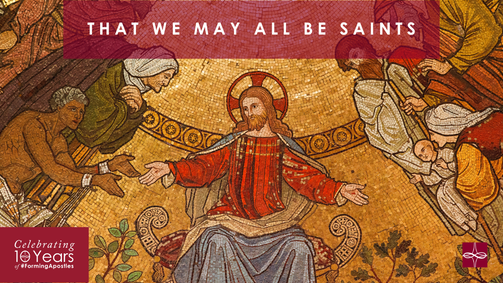
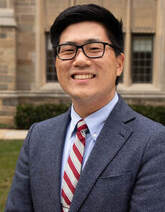
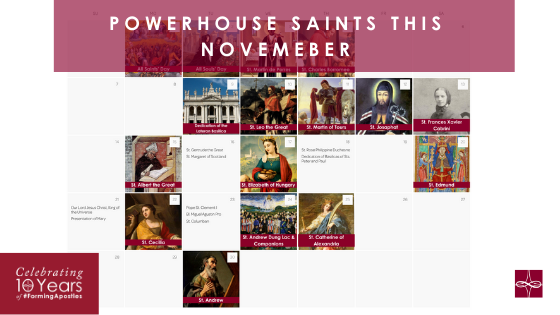

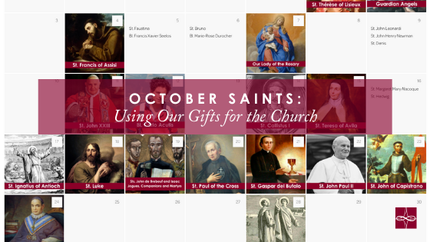

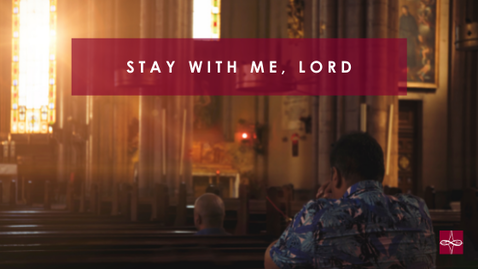
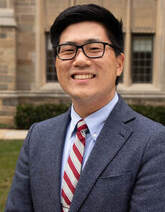
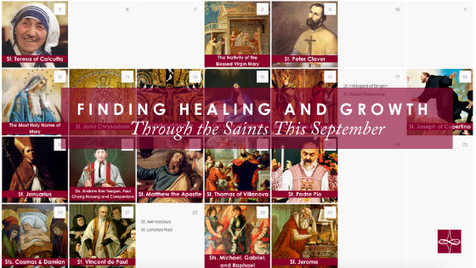

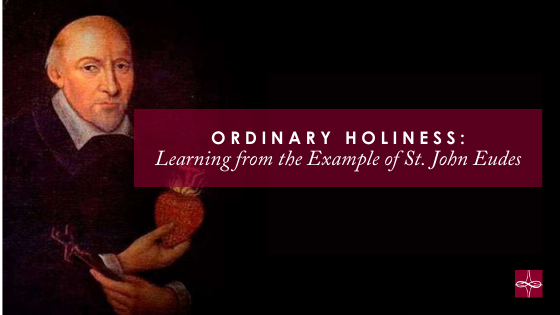
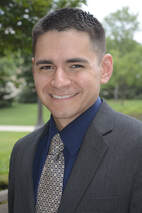
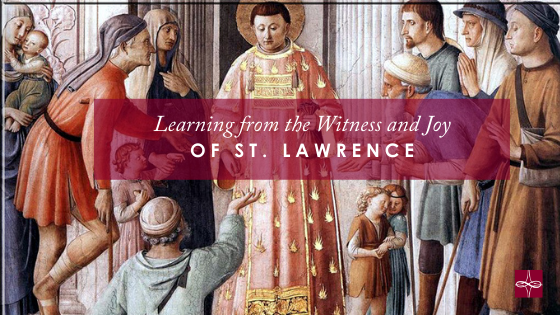


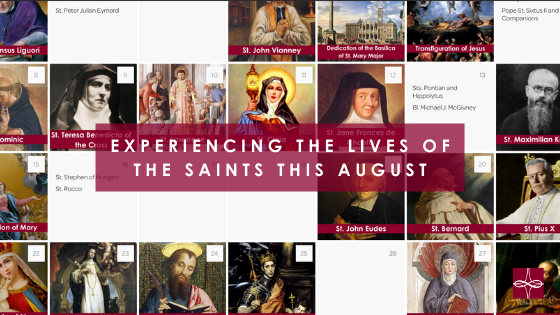

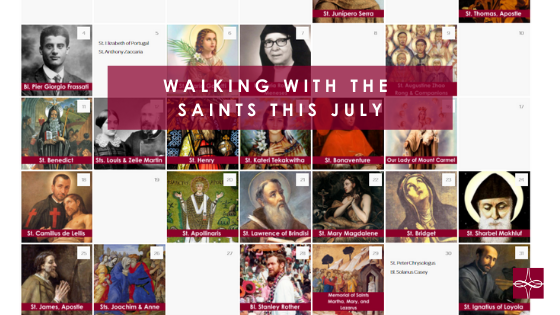
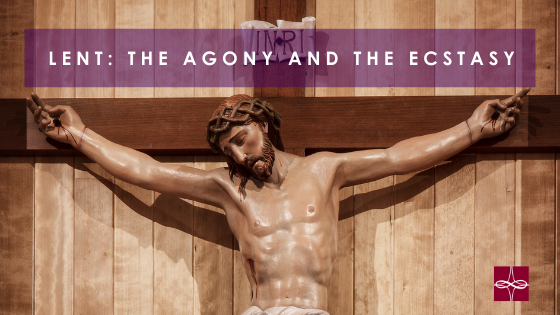

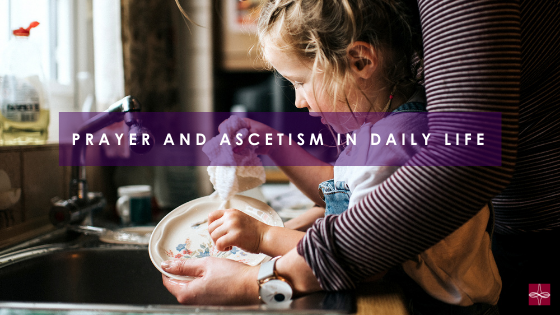

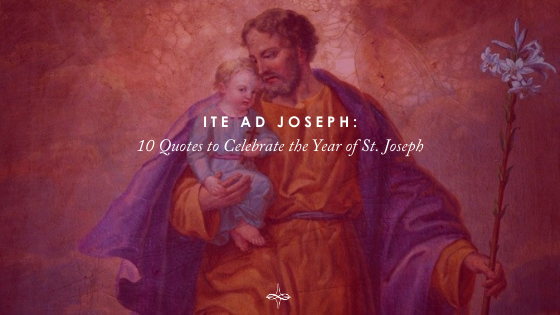

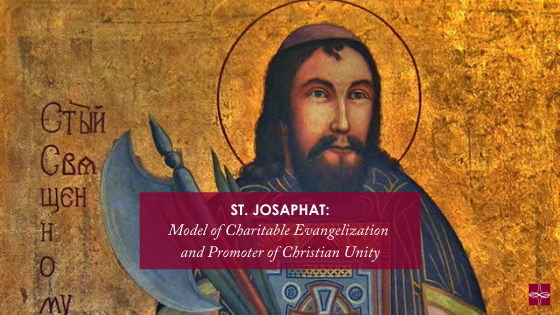

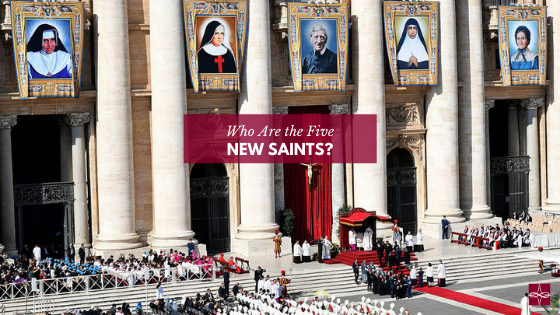

 RSS Feed
RSS Feed